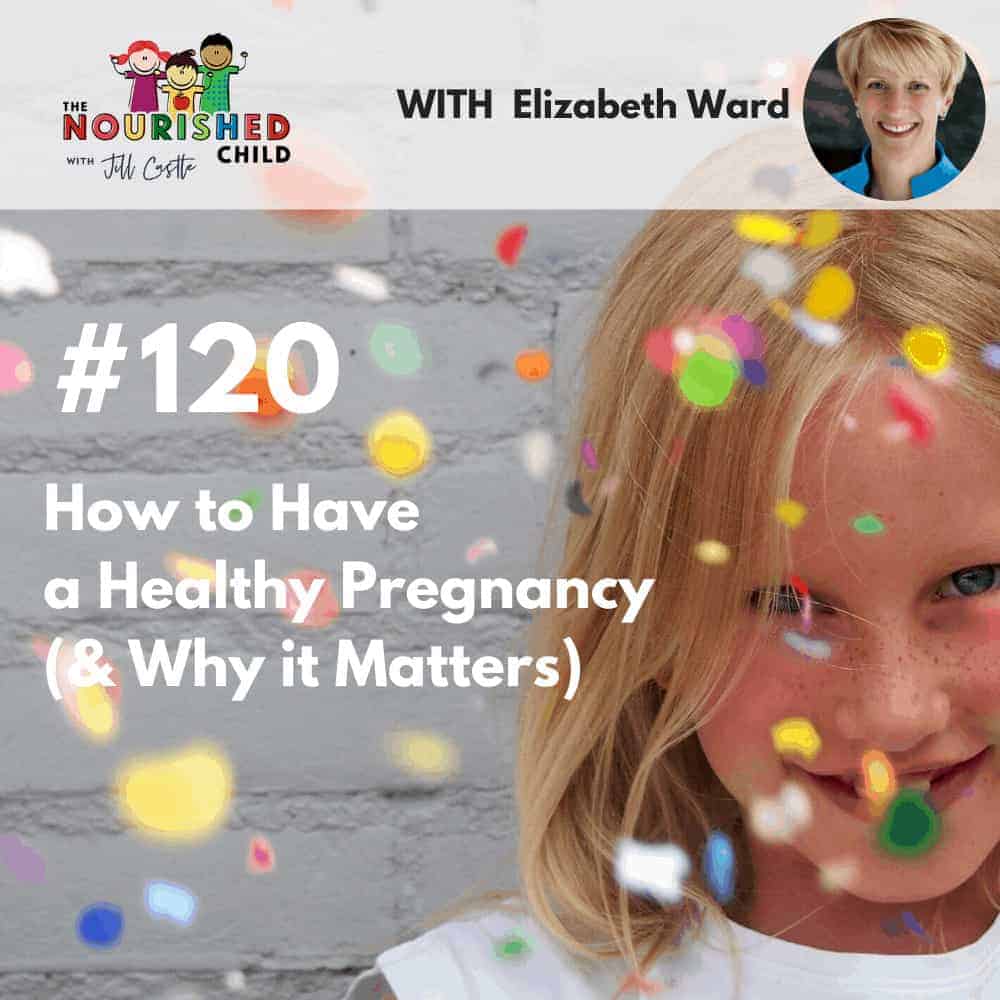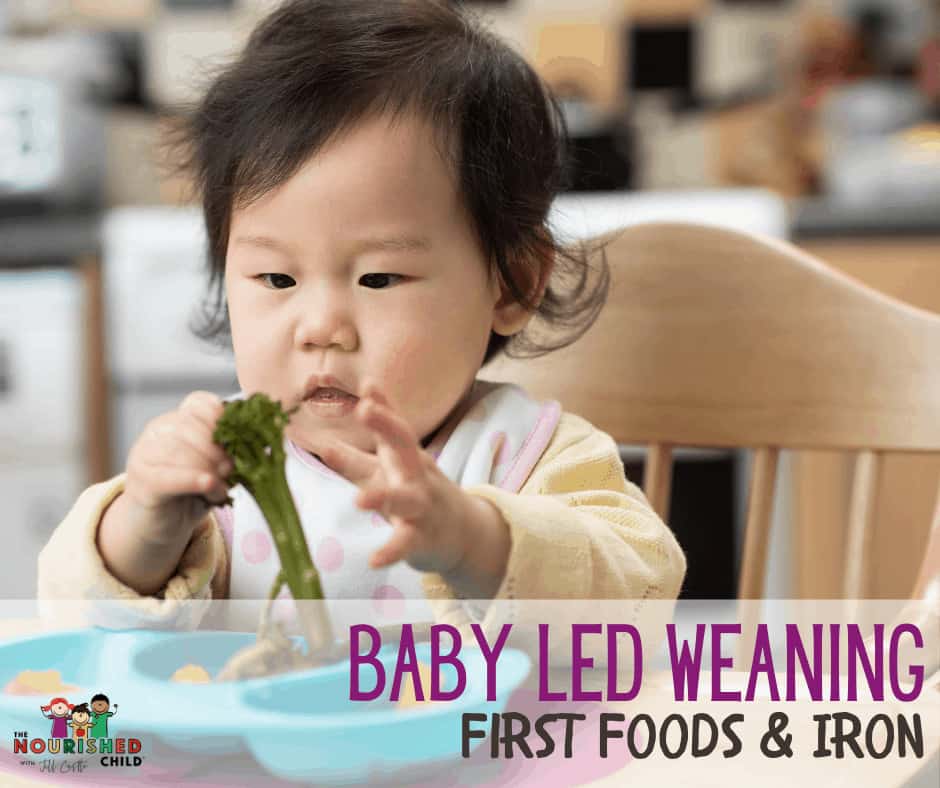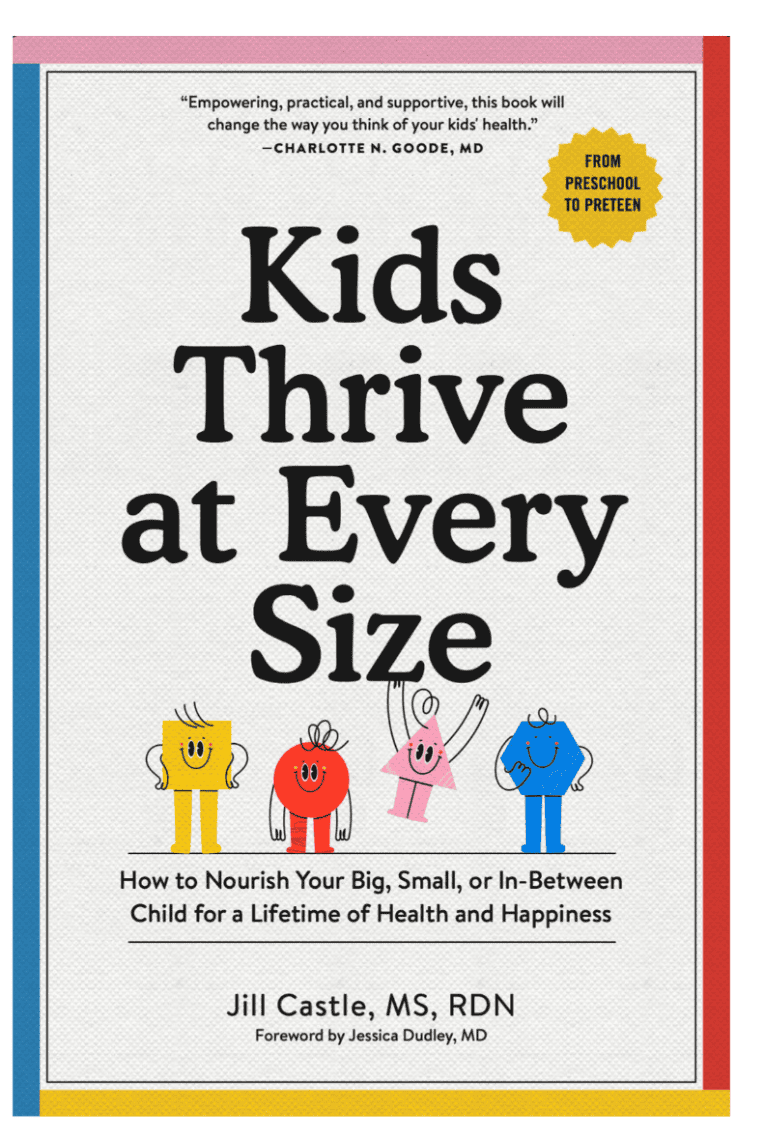First Foods for Baby: 5 Things All Parents Should Know
October 12, 2020
First foods for baby starts the journey of health by laying the blueprint for your child’s growth, food preferences, and his relationship with food.
Learn why starting solids is the critical first step in the journey of feeding your child throughout his entire childhood.
My guess is you’ve probably heard and seen quite a bit on the topic of starting first foods. Maybe you’ve seen parents put cereal in the baby bottle at 3 or 4 months to get their baby to sleep through the night.
Or, you’ve heard about the baby led weaning approach, or are drawn to the combined feeding method. There’s a lot of information around the best first foods for baby, the different feeding method approaches, and the importance of the parent child relationship.
But what’s most important is to understand the impact of this critical first step in feeding.
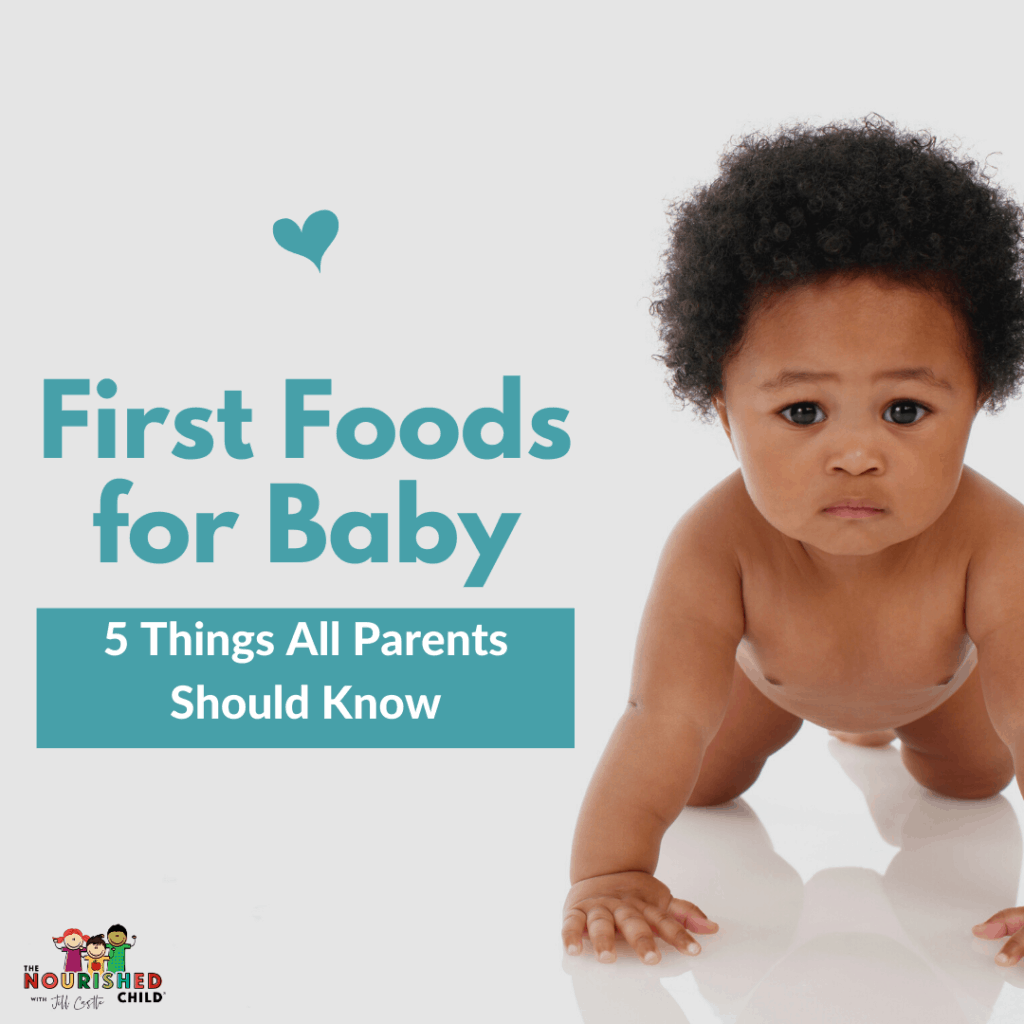
5 Things All Parents Should Know about Baby’s First Foods
Whether you’re a first-timer or you’ve been through this stage before with an older child, starting solids begins the journey of food, eating and health.
From learning how to eat to conquering self-feeding, starting solids is an important stage of feeding your child, like all things parenting and food.
Let’s explore why this stage is so crucial to your child’s future health.
1. Nutrition for Baby Lays the Framework of Health and Growth
Everything your infant eats either contributes to his growth and development, or it challenges it. For example, in the first two years of life, you baby’s brain is growing tremendously and this process depends on key nutrients like iron and omega-3 DHA.
You baby’s tummy is tiny and only holds small amounts of food at a time. This means every bite counts. The food your baby eats is the source of the nutrients required for brain, bone and body growth.
If young infants and toddlers don’t get the nutrition they need, it may interrupt their development. For instance, we have research that tells us a deficiency of vitamin D may lead to rickets, a softening of the bone which may show up as bowed legs or knock knees.
A deficiency of iron can lead to anemia, which may impact intellectual development.
There are health conditions tied to imbalances of the diet, too. When children get too much fat, especially saturated fat in their diets, they may deposit plaque in their arteries, an early sign of cardiovascular disease.
Too much refined sugar can crowd out important nutrients and solidify a preference for sweet flavors.
What does this mean as you begin first foods for baby? It means that nutrition should be a key consideration.
Paying attention to food selection, particularly nutrient-rich foods, can benefit your child’s future health.
2. Ideal First Foods for Baby are Nutrient-Dense and Flavorful
As I mentioned above, careful selection of first foods can help your baby get all the nutrients he needs. The good news is twofold: It doesn’t take a lot of food to match nutrient needs (babies are small so food amounts are small, too). Secondly, many babies are open and interested in almost anything you offer them to eat.
You’ll want to target the major foods groups, such as:
- Protein
- Whole Grains
- Fruit
- Vegetables
- Dairy
- Healthy Fats
Each of these food groups carries a package of important nutrients for baby. In fact, the foods in these groups are categorized by the nutrients they offer.
For example, protein foods such as meat, beans or eggs are good sources of iron, zinc, and vitamin B12, all of which are important for the brain.
Another example is the dairy group, which showcases vitamin D and calcium (plus a bunch of other nutrients), which are important for bone hardening and strengthening.
The other aspect to consider is flavor. During this period of introducing first foods for baby, one of the goals is to expose your new eater to a lot of different flavors.
The science tells us that early flavor introduction encourages healthy eating and may reduce the likelihood of picky eating later on. Essentially, introducing flavors such as garlic, cinnamon, and curry helps your baby like them for life.
How powerful is that?!
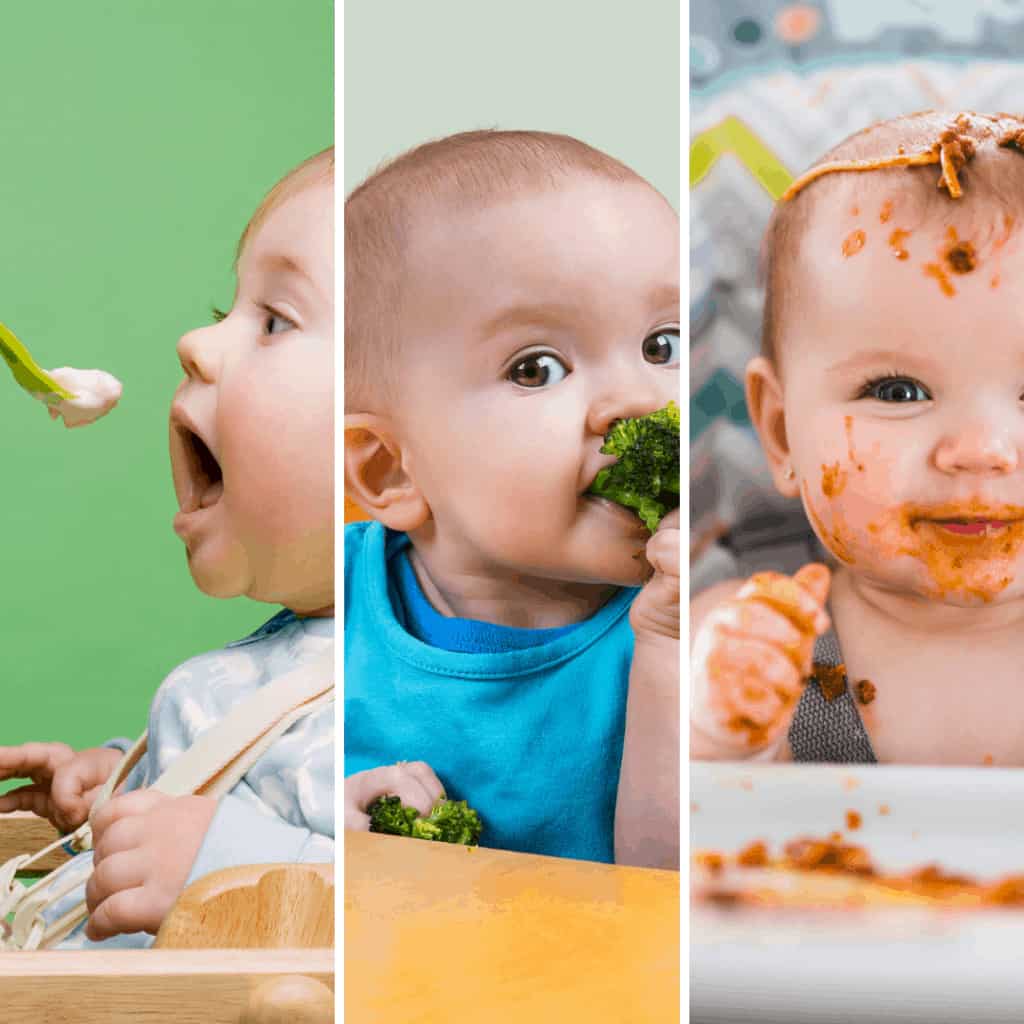
3. The Parent Child Relationship is Key to Good Eating
One of the goals for feeding your baby is to develop a solid and strong parent child relationship. Feeding affects this relationship and the relationship itself impacts how well (or not) your child eats.
Consider it a feedback loop.
If you tend to feed food to your baby with the spoon and with the intention he finish what you’ve made for him, which may be beyond his interest or hunger level, your baby may learn that meal time is unpleasant and uncomfortable.
Over time, he may dread meals. He may see you with the spoon and start to cry and refuse to eat. This situation can put strain on the parent child relationship.
The best way to support this relationship is to be responsive with feeding. Listen to your baby’s appetite cues. Watch his body language.
When he pulls away from the spoon does it mean he wants more or he’s done eating?
Responsive feeding can guide you to a solid, trusting parent child relationship during infancy. You can do this using the spoon, a baby self-feeding approach or both.
4. Baby Self Feeding is Your Goal
Babies spend a lot of time learning to eat during the first year. If you are mindful of responsive feeding and want to honor the parent child relationship, then one of the easiest ways to navigate this is by promoting self-feeding.
Baby led weaning is a popular way to do this. Starting at 6 months of age, it focuses on using strips of family food that baby can hold and feed himself. The foods are soft, tender and meltable like a strip of buttered toast, a strip of beef, or a slice of ripe avocado.
Supervision is required, but your baby sets the pace and amount of eating. Some of the benefits of baby led weaning include better appetite regulation, healthy weight status, and less pickiness.
If you’re not doing a BLW approach, you can accomplish self-feeding with the spoon. Load the spoon with baby food puree and place it in your baby’s hand. Teach him to bring it to his mouth. Before you know it, he’ll get the hang of it and be feeding himself!
The most important thing to focus on is the self-feeding aspect, however, rather than taking charge of feeding. Allow your baby to eat independently. This fosters appetite regulation while letting your baby learn to eat the right amounts of food for him, and at his pace.
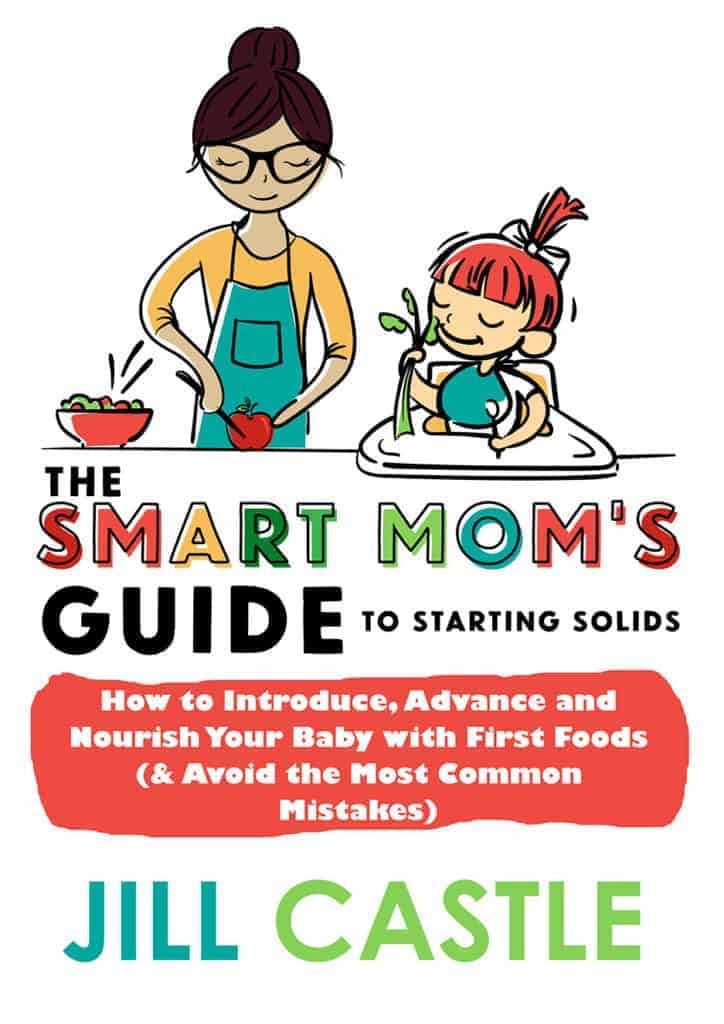
5. Combined Feeding, Spoon Feeding, & Baby Led Weaning: Which Feeding Method is Right for Us?
There’s really no right or wrong method to use when beginning first foods for baby. I personally like the combined feeding approach, mixing the best of both baby led weaning and spoon feeding.
I feel that matching nutrient needs and promoting self-feeding is easier to achieve this way.
Most importantly, the choice is yours. You can meet your baby’s nutrition needs, promote self-feeding and be responsive using any of these methods.
I encourage you to make the most of whatever feeding approach you decide to use.
For more details on how to start solids for baby, including the timing, food balance, meal plan ideas and more, check out my book, The Smart Mom’s Guide to Starting Solids.
The beauty of starting first foods for baby is that you get to make all these decisions for your baby and family.
This is just the beginning!
Feeding your baby sets the foundation for toddler eating. Each stage of childhood and feeding kids builds on the next. When you do a good job of feeding and nourishing your child, you’ll raise a good eater.

Need More Help with Raising a Good Eater?
Be sure to explore all the resources here, including workshops, classes and guidebooks. We are constantly developing resources to help you nourish and nurture your child to optimal health!
And don’t forget to read Why All Parents Need Nutrition Education or The Ultimate Guide to Baby Nutrition in the First Year.

Jill Castle, MS, RD
I like empowering parents to help their children and teens thrive at every size with realistic advice centered on healthful habits around food, feeding, nutrition and health behaviors. As a pediatric dietitian and author, my goal is to share strategies and realistic advice to help you raise a healthy and happy child through my articles and podcast.

